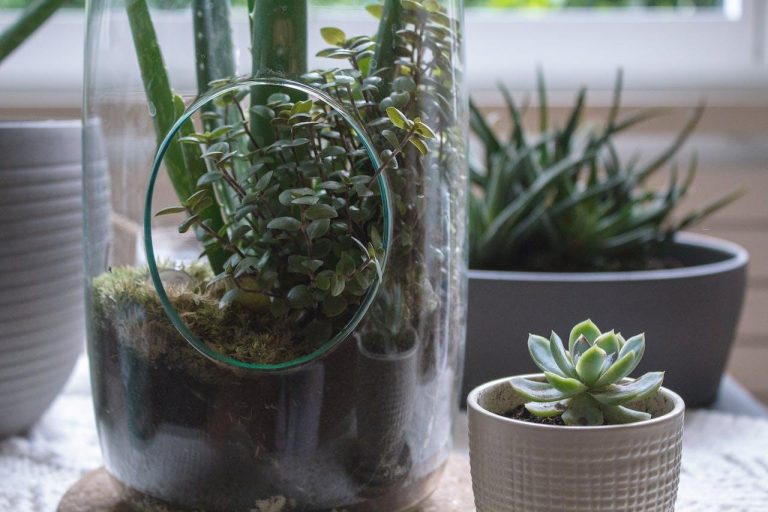A study showed that people who spend at least two hours a week in green spaces were more likely to report better health and psychological conditions. But finding the time to do it might prove to be a challenge. So why not bring it indoors? Picture a lush, self-sustaining paradise right inside your space.
Terrariums are wonderful miniature ecosystems encased in a glass container. It encapsulates nature’s beauty, allowing plants to thrive within a controlled environment. It also makes a captivating sanctuary that enhances your living space and nourishes your well-being.
Here’s everything you need to know building a natural oasis within the comforts of your home.
How to Get Started
Building your first miniature greenery haven can be tricky. It’s essential to know the right first steps:
Choose the Right Container
Any clear container that will allow you ample visibility will do. When it comes to size, you can be as large or as small as you want, depending on your intended space.
However, a large glass vessel with a large opening is always recommended. They’re easier to work with and facilitate better circulation for both light and moisture. While you can use smaller containers, they might compromise your terrarium’s longevity.
Select the Best Terrarium Plants
David Latimer grew a spiderwort plant in a sealed terrarium for an astonishing 63 years, making it the world’s oldest terrarium. Choosing an easygoing fauna played a significant role in making the feat possible.
Opt for low-maintenance plants that can easily thrive in an enclosed environment. Some stellar choices include ferns, mosses, and succulents. Create a harmonious balance by selecting species that coexist peacefully and share similar care requirements. Here are some of your best plant options:
- Ferns: maidenhair fern, Boston fern
- Mosses: sheet moss, pillow moss
- Succulents: aloe vera, haworthia
Prepare the Needed Tools and Materials
Every green thumb needs to hold the right tools. Here’s a handy checklist that you need to build and maintain a terrarium:
- Stones or leca for efficient drainage
- Potting scoop used for substrate layering
- Tweezers for delicate plant placement
- Spray bottle for controlled watering
- Charcoal for water filtration
- Substrate mix for a nutrient-rich soil foundation
- Optional decorative elements like figurines
- Wipes of cloth to keep the glass clean
The Building Process

Now that you have everything you need, it’s time to start building your terrarium, the best and the most complex part. Let’s break down the process into simple steps.
1. Place the stones for proper drainage.
Start with a clean, dry container. Add a layer of stones, leca, or pebbles at the bottom. This ensures that excess water has an escape route, preventing water clogging. Sprinkle a thin layer of activated charcoal over the drainage material. This absorbs impurities and keeps your terrarium fresh.
2. Choose the right soil and substrate.
Pick a well-draining potting mix suitable for your plants. For instance, if you plan on creating a mushroom terrarium, an organic sterile mushroom substrate provides the essential nutrients to support a mushroom’s growth. Layer it gently over the charcoal, creating a nutrient-rich bed for your green companions.
3. Arrange your plants
Ensure the proper arrangement of your chosen plants. Consider their size and growth habits. Balance composition with your terrarium’s visual appeal, so each plant should have ample room to flourish. Your tweezers or potting scoop will help you do this with precision.
4. Add a decorative touch
Enhance your mini-oasis with miniature or decorative stones. Get creative and don’t hesitate to infuse it with your unique style and personality.
Eden in a Bottle
Terrariums are unique vessels for bringing a little bit of greenery and paradise to your home. The idea of creating a mini microcosm will seem daunting at first. But with the right tools and enough knowledge of the process, you’d soon find that it can be a breeze.
You can expand your little personal ecosystem with some “wild” additions. You can get a few feathered friends, like parakeets, cockatiels, and parrots. You can also look after a few backyard chickens and care for their eggs in a poultry egg incubator.

